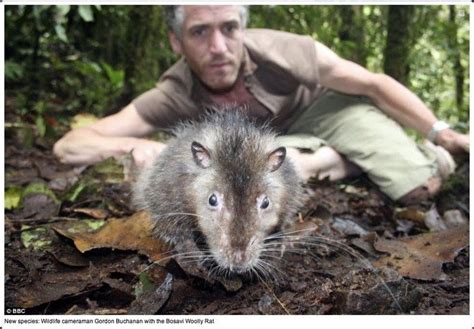
A highly toxic plant, giant hogweed, known for causing severe skin burns and blisters, is rapidly spreading across multiple states, prompting urgent warnings from experts on identification and eradication.
Giant hogweed (Heracleum mantegazzianum), a federally listed noxious weed, poses a significant public health risk due to its sap containing phytotoxic furanocoumarins. Contact with the sap, combined with sunlight, can lead to phytophotodermatitis, causing painful blisters, severe burns, and potential long-term skin sensitivity. Health officials and environmental agencies are urging residents to exercise extreme caution and report any sightings of the plant.
“Giant hogweed sap can cause phytophotodermatitis, where skin becomes very sensitive to sunlight and may suffer blistering, severe burns, or long-term scars,” states the New York Department of Health, highlighting the severity of the plant’s effects. The plant, originally native to the Caucasus region of Eurasia, was introduced to the United States as an ornamental species and has since spread aggressively, particularly in the Northeast, Mid-Atlantic, and Pacific Northwest regions.
Identification is crucial for avoiding contact and enabling effective eradication efforts. Giant hogweed is characterized by its towering height, often reaching 14 feet or more, and its large, deeply lobed leaves that can span up to five feet in width. The plant produces umbrella-shaped clusters of small white flowers, typically blooming from late spring to mid-summer. Its thick, green stems are marked with distinctive purple blotches and coarse white hairs.
Several states, including New York, Pennsylvania, Ohio, and Washington, have reported significant infestations of giant hogweed. State agencies are actively monitoring the spread of the plant and providing resources for identification and control. The Pennsylvania Department of Conservation and Natural Resources (DCNR) emphasizes the importance of reporting sightings, stating, “If you see giant hogweed, do not touch it. Report the sighting to the Pennsylvania DCNR.”
Eradication of giant hogweed requires caution and specialized techniques to prevent skin contact and ensure complete removal of the plant. Protective clothing, including gloves, long sleeves, and eye protection, is essential when handling the plant. Small infestations can be controlled by carefully digging up the entire plant, including the root system. Larger infestations may require the use of herbicides, applied by trained professionals. Repeated treatments are often necessary to prevent regrowth.
The economic and ecological impacts of giant hogweed infestations are also significant. The plant’s aggressive growth can outcompete native vegetation, reducing biodiversity and disrupting ecosystems. Control and eradication efforts require substantial resources, placing a burden on state and local governments. Public awareness campaigns are crucial for preventing further spread and minimizing human health risks.
The spread of giant hogweed highlights the challenges associated with invasive species and the importance of early detection and rapid response. Collaborative efforts between government agencies, researchers, and the public are essential for managing this toxic threat and protecting both human health and the environment. Continued monitoring, research, and public education are necessary to prevent the further spread of giant hogweed and mitigate its harmful effects.
Detailed Identification and Characteristics
Giant hogweed is a biennial or perennial herb that can grow to an impressive height, often reaching between 7 and 14 feet tall. Its size is one of its most distinguishing features, making it relatively easy to spot. The plant’s leaves are deeply lobed and compound, with each leaf capable of growing up to 5 feet wide. The edges of the leaves are sharply toothed, adding to their distinctive appearance.
The stems of giant hogweed are thick and sturdy, typically measuring 2 to 4 inches in diameter. They are green in color and marked with prominent purple blotches and coarse white hairs. These hairs can easily transfer the plant’s toxic sap to skin or clothing, making it essential to avoid direct contact.
The flowers of giant hogweed are arranged in large, umbrella-shaped clusters known as umbels. These umbels can be up to 2.5 feet in diameter and are composed of numerous small white flowers. The plant typically blooms from late spring to mid-summer, producing a prolific amount of seeds. Each plant can produce tens of thousands of seeds, contributing to its rapid spread.
The seeds of giant hogweed are oval-shaped and flattened, with ridges and oil tubes running along their surface. They are easily dispersed by wind, water, and animals, allowing the plant to colonize new areas quickly. The seeds can remain viable in the soil for several years, making eradication efforts more challenging.
Health Risks and Symptoms
The primary health risk associated with giant hogweed is its sap, which contains phytotoxic furanocoumarins. These compounds cause phytophotodermatitis, a condition in which the skin becomes extremely sensitive to sunlight. When the sap comes into contact with skin and is exposed to sunlight, it triggers a chemical reaction that results in painful blisters, severe burns, and long-term skin discoloration.
Symptoms of phytophotodermatitis typically appear within 24 to 48 hours after exposure. The affected skin becomes red, swollen, and itchy, followed by the formation of fluid-filled blisters. These blisters can be quite large and painful, and they may take several weeks to heal. In severe cases, the burns can be so deep that they require medical treatment, including skin grafts.
Even after the initial burns have healed, the affected skin may remain sensitive to sunlight for several years. This increased sensitivity can lead to recurring skin irritation and discoloration upon subsequent exposure to sunlight. Individuals who have been exposed to giant hogweed sap should take extra precautions to protect their skin from the sun, such as wearing protective clothing and applying sunscreen.
If the sap comes into contact with the eyes, it can cause severe irritation, temporary blindness, or even permanent damage. It is crucial to rinse the eyes immediately with water for at least 15 minutes and seek medical attention.
Children are particularly vulnerable to the effects of giant hogweed, as they may be more likely to come into contact with the plant while playing outdoors. Parents should educate their children about the dangers of giant hogweed and teach them to avoid touching any unfamiliar plants.
Geographic Distribution and Spread
Giant hogweed is native to the Caucasus region of Eurasia and was introduced to the United States as an ornamental plant in the early 20th century. Since then, it has spread rapidly across several states, particularly in the Northeast, Mid-Atlantic, and Pacific Northwest regions.
The plant is commonly found in disturbed areas, such as roadsides, vacant lots, and along streams and rivers. It can also invade natural habitats, such as forests and wetlands, outcompeting native vegetation and disrupting ecosystems.
Several states have reported significant infestations of giant hogweed, including New York, Pennsylvania, Ohio, Washington, Oregon, and Michigan. State agencies are actively monitoring the spread of the plant and implementing control measures to prevent further expansion.
The spread of giant hogweed is facilitated by its prolific seed production and efficient dispersal mechanisms. The seeds can be carried by wind, water, and animals, allowing the plant to colonize new areas quickly. Human activities, such as construction and landscaping, can also contribute to the spread of giant hogweed by inadvertently transporting seeds or plant fragments to new locations.
Climate change may also be playing a role in the spread of giant hogweed. Warmer temperatures and changing precipitation patterns may create more favorable conditions for the plant to thrive in new areas.
Eradication and Control Methods
Eradication of giant hogweed requires a multi-faceted approach that combines mechanical, chemical, and biological control methods. The specific methods used will depend on the size and location of the infestation, as well as the available resources.
Mechanical control involves physically removing the plant, either by digging it up or cutting it down. Digging up the plant is most effective for small infestations, as it ensures that the entire root system is removed. However, it is essential to wear protective clothing, including gloves, long sleeves, and eye protection, to avoid contact with the sap.
Cutting down the plant can prevent it from producing seeds, but it will not kill the plant. Repeated cuttings are necessary to exhaust the plant’s energy reserves and prevent regrowth. The best time to cut down giant hogweed is in the early spring, before it has a chance to flower.
Chemical control involves using herbicides to kill the plant. Herbicides can be applied directly to the leaves or stems, or they can be injected into the plant’s root system. The choice of herbicide will depend on the specific situation, as well as the potential environmental impacts. It is important to follow all label instructions carefully when using herbicides.
Biological control involves using natural enemies, such as insects or pathogens, to control the plant. There are currently no approved biological control agents for giant hogweed in the United States, but research is ongoing to identify potential candidates.
Regardless of the control method used, it is essential to monitor the area regularly and repeat treatments as necessary to prevent regrowth. It may take several years of sustained effort to completely eradicate giant hogweed from an area.
Prevention and Public Awareness
Prevention is the best way to protect yourself from giant hogweed. This involves avoiding contact with the plant and educating others about its dangers.
When hiking or working outdoors, wear protective clothing, including long sleeves, long pants, gloves, and eye protection. Avoid touching any unfamiliar plants, and be especially cautious around large, towering plants with umbrella-shaped clusters of white flowers.
Educate your children about the dangers of giant hogweed and teach them to avoid touching any unfamiliar plants. Supervise children closely when they are playing outdoors, and inspect their skin regularly for any signs of exposure.
If you see giant hogweed on your property, take steps to eradicate it as soon as possible. Contact your local extension office or department of agriculture for assistance with identification and control.
Report any sightings of giant hogweed to your state’s Department of Agriculture or Natural Resources. This will help officials track the spread of the plant and implement control measures.
Public awareness campaigns are essential for preventing the further spread of giant hogweed and minimizing human health risks. These campaigns should focus on educating the public about the plant’s identification, health risks, and control methods.
Ecological and Economic Impacts
The ecological impacts of giant hogweed are significant. The plant’s aggressive growth can outcompete native vegetation, reducing biodiversity and disrupting ecosystems. It can also alter soil properties and increase erosion.
Giant hogweed can also pose a threat to agriculture. It can invade crop fields and pastures, reducing yields and contaminating feed. The plant’s sap can also cause burns on livestock that come into contact with it.
The economic impacts of giant hogweed are also considerable. Control and eradication efforts require substantial resources, placing a burden on state and local governments. The plant can also reduce property values and increase healthcare costs.
A study published in the journal Weed Science estimated that the annual economic impact of invasive plants in the United States is over $34 billion. Giant hogweed is just one of many invasive plants that are causing significant economic damage.
Legal and Regulatory Framework
Giant hogweed is regulated as a noxious weed in many states. This means that it is illegal to transport, sell, or propagate the plant. Landowners may be required to control or eradicate giant hogweed on their property.
The United States Department of Agriculture (USDA) also regulates giant hogweed as a federal noxious weed. This means that it is illegal to import or export the plant without a permit.
Several states have implemented specific laws and regulations to control giant hogweed. These laws may include provisions for mandatory reporting, eradication programs, and penalties for non-compliance.
The legal and regulatory framework for giant hogweed is designed to prevent the further spread of the plant and protect human health and the environment.
Case Studies and Examples
Several states have implemented successful programs to control giant hogweed. For example, the New York State Department of Environmental Conservation (DEC) has been working to eradicate giant hogweed since 2008. The DEC’s program involves surveying for the plant, treating infestations with herbicides, and educating the public about its dangers.
As a result of the DEC’s efforts, the number of giant hogweed sites in New York has been reduced from over 800 in 2008 to less than 300 today. The DEC’s program has also helped to prevent new infestations from becoming established.
Another successful example is the Pennsylvania Department of Conservation and Natural Resources (DCNR)’s giant hogweed control program. The DCNR’s program involves working with landowners to identify and eradicate giant hogweed on their property. The DCNR also provides technical assistance and funding to help landowners control the plant.
These case studies demonstrate that it is possible to control giant hogweed with sustained effort and effective management strategies.
Expert Opinions and Recommendations
Experts agree that early detection and rapid response are essential for controlling giant hogweed. They also recommend using a multi-faceted approach that combines mechanical, chemical, and biological control methods.
Dr. Elizabeth Schupp, a professor of ecology at Utah State University, emphasizes the importance of public education. “The more people know about giant hogweed, the better equipped they will be to avoid contact with it and report sightings to the authorities,” she says.
Dr. James Miller, a professor of forestry at Auburn University, recommends using herbicides as part of an integrated pest management strategy. “Herbicides can be very effective at killing giant hogweed, but they should be used in a responsible manner and in conjunction with other control methods,” he says.
Experts also recommend wearing protective clothing when working around giant hogweed and seeking medical attention if you come into contact with the sap.
Future Research and Challenges
Future research on giant hogweed should focus on developing more effective control methods, identifying biological control agents, and understanding the plant’s ecology and spread.
One of the biggest challenges in controlling giant hogweed is its ability to produce large quantities of seeds that can remain viable in the soil for several years. This means that eradication efforts must be sustained over a long period of time to prevent regrowth.
Another challenge is the plant’s ability to spread rapidly to new areas. This requires ongoing monitoring and surveillance to detect new infestations early.
Despite these challenges, experts are optimistic that giant hogweed can be controlled with continued research and effective management strategies.
Conclusion
Giant hogweed poses a significant threat to human health and the environment. Its toxic sap can cause painful burns and long-term skin sensitivity, and its aggressive growth can outcompete native vegetation and disrupt ecosystems.
Early detection, rapid response, and sustained control efforts are essential for managing this invasive plant. By educating the public, implementing effective control programs, and conducting ongoing research, we can protect ourselves from the harmful effects of giant hogweed and prevent its further spread. Collaborative efforts between government agencies, researchers, and the public are crucial for managing this toxic threat and protecting both human health and the environment.
Frequently Asked Questions (FAQs)
Q1: What is giant hogweed, and why is it dangerous?
A: Giant hogweed (Heracleum mantegazzianum) is a large, invasive plant species characterized by its towering height (up to 14 feet), large lobed leaves, and umbrella-shaped clusters of white flowers. It is dangerous because its sap contains phytotoxic furanocoumarins, which can cause phytophotodermatitis. This condition results in severe skin burns, blisters, and potential long-term skin sensitivity when the skin comes into contact with the sap and is exposed to sunlight.
Q2: How can I identify giant hogweed?
A: Giant hogweed can be identified by the following characteristics:
- Height: Typically reaches 7-14 feet tall.
- Leaves: Large, deeply lobed leaves that can span up to 5 feet wide, with sharply toothed edges.
- Stems: Thick, green stems (2-4 inches in diameter) marked with purple blotches and coarse white hairs.
- Flowers: Umbrella-shaped clusters (umbels) of small white flowers, up to 2.5 feet in diameter.
- Seeds: Oval-shaped and flattened, with ridges and oil tubes.
Q3: What should I do if I come into contact with giant hogweed sap?
A: If you come into contact with giant hogweed sap, take the following steps:
- Immediately wash the affected area: Use soap and water to wash the skin thoroughly.
- Keep the area covered: Protect the skin from sunlight for at least 48 hours.
- Seek medical attention: If blisters or burns develop, consult a doctor immediately.
- Eye contact: If the sap gets in your eyes, rinse them with water for at least 15 minutes and seek immediate medical attention.
Q4: How can I safely eradicate giant hogweed from my yard?
A: Eradicating giant hogweed requires caution and protective measures:
- Protective clothing: Wear gloves, long sleeves, long pants, and eye protection to avoid skin contact.
- Small infestations: Carefully dig up the entire plant, including the root system. Dispose of the plant material in a sealed plastic bag.
- Large infestations: Consider using herbicides applied by trained professionals. Repeated treatments may be necessary.
- Avoid skin contact: Never use a string trimmer or mower to cut down giant hogweed, as this can splatter the sap.
Q5: Where is giant hogweed most commonly found in the United States?
A: Giant hogweed is most commonly found in the Northeast, Mid-Atlantic, and Pacific Northwest regions of the United States. States with significant infestations include New York, Pennsylvania, Ohio, Washington, Oregon, and Michigan. The plant tends to thrive in disturbed areas, such as roadsides, vacant lots, and along streams and rivers.









